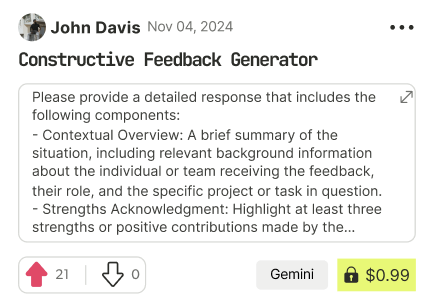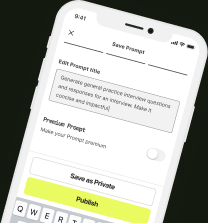prompt mine App
Find, Create & Share AI Magic
**Title:** Harmonious Communication *** **Phase 1: Identify the Static** * **Emotional Charge:** Beginning the conversation when either of you are already stressed, tired, or emotionally charged. * **Defensive Tone:** Using accusatory language or a judgmental tone ("You always..." or "You never..."). * **Lack of Timing:** Bringing up sensitive topics at inappropriate times (e.g., during a busy workday, when guests are over). * **Unclear Needs:** Failing to clearly articulate your feelings and specific needs, leading to misinterpretation. **Phase 2: Adjust the Signal** **Instead of:** "You never listen to me!" **Try:** "I've been feeling unheard lately, and I'm hoping we can connect better. I value your perspective, and I want to make sure I'm also clearly sharing mine." **Specifically, try saying something like this:** "I've been feeling [your emotion, e.g., a little frustrated, disconnected, sad] because [situation, e.g., I feel like my ideas aren't fully considered, we haven't had much quality time, or my contributions aren't appreciated]. It’s important to me that we both feel heard and understood. Would you be open to talking about how we can make that happen?" **Phase 3: Tune Together** 1. **Check for Understanding:** "Does that make sense? I want to make sure I'm explaining myself clearly." 2. **Invite Perspective:** "I'm curious, how do you see things from your side? What’s your experience been like?" 3. **Validate Emotions:** "It's okay if you feel differently; my goal isn't to change your perspective but to connect with you. I just want to find a way for us to both feel heard and respected." 4. **Collaborate on Solutions:** "What ideas do you have for how we can better communicate and ensure we both feel heard?" 5. **Affirm Connection:** "Even though we might have different perspectives sometimes, I really value our relationship and want us to be a strong team. Thank you for listening and being willing to talk about this."
Phase 1: Identify the Static
- Consider the timing of your conversation. Are you both calm and without distractions?
- Be mindful of your tone; ensure it's calm and non-confrontational.
- Recognize any strong emotions you might be experiencing, as they can affect how your message is perceived.
Phase 2: Adjust the Signal
- Instead of saying, "You never help with chores and I feel unappreciated," try, "I sometimes feel overwhelmed managing household chores, and your support would mean a lot to me."
Phase 3: Tune Together
- After expressing your feelings, ask your partner, "How do you feel about what I said?"
- Invite your partner to share their perspective: "I’d love to hear your thoughts on how we can work together."
- Conclude by agreeing on small steps for improvement: "Can we find a time to see how we both can contribute to our chores more evenly?"
This guide will help facilitate open dialogue, ensuring both partners feel respected and valued.

**Title:** Harmonious Communication *** **Phase 1: Identify the Static** * **Emotional Charge:** Beginning the conversation when either of you are already stressed, tired, or emotionally charged. * **Defensive Tone:** Using accusatory language or a judgmental tone ("You always..." or "You never..."). * **Lack of Timing:** Bringing up sensitive topics at inappropriate times (e.g., during a busy workday, when guests are over). * **Unclear Needs:** Failing to clearly articulate your feelings and specific needs, leading to misinterpretation. **Phase 2: Adjust the Signal** **Instead of:** "You never listen to me!" **Try:** "I've been feeling unheard lately, and I'm hoping we can connect better. I value your perspective, and I want to make sure I'm also clearly sharing mine." **Specifically, try saying something like this:** "I've been feeling [your emotion, e.g., a little frustrated, disconnected, sad] because [situation, e.g., I feel like my ideas aren't fully considered, we haven't had much quality time, or my contributions aren't appreciated]. It’s important to me that we both feel heard and understood. Would you be open to talking about how we can make that happen?" **Phase 3: Tune Together** 1. **Check for Understanding:** "Does that make sense? I want to make sure I'm explaining myself clearly." 2. **Invite Perspective:** "I'm curious, how do you see things from your side? What’s your experience been like?" 3. **Validate Emotions:** "It's okay if you feel differently; my goal isn't to change your perspective but to connect with you. I just want to find a way for us to both feel heard and respected." 4. **Collaborate on Solutions:** "What ideas do you have for how we can better communicate and ensure we both feel heard?" 5. **Affirm Connection:** "Even though we might have different perspectives sometimes, I really value our relationship and want us to be a strong team. Thank you for listening and being willing to talk about this."


Find Powerful AI Prompts
Discover, create, and customize prompts with different models, from ChatGPT to Gemini in seconds

Simple Yet Powerful
Start with an idea and use expert prompts to bring your vision to life!